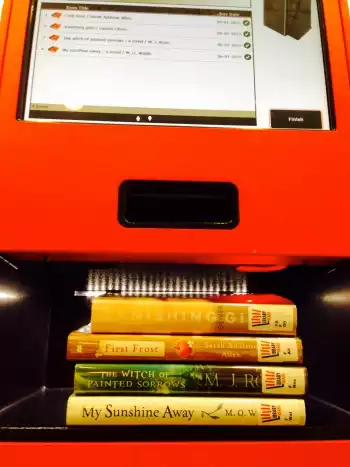
Have you ever wondered about the technology we use to check out the items you borrow from the library? Maybe these questions have crossed your mind: Is it a barcode scanner? Magic? Telekinesis? Witchcraft? The answer is actually RFID technology, which is short for “radio frequency identification.”
So how does it work? Every item in the library contains a special sticker, known as an RFID tag, which consists of an antenna and a microchip. When you pile your library books at our checkout terminals, our RFID system sends out electromagnetic waves to the RFID tags in these items. The microchip modulates the waves, which are sent back to the reader through the antenna. Then our software programs interpret the waves and they register to customers’ accounts as digital information.
Or as I tell people, “It’s magic.”
We started using RFID in 2004 when we moved into the new building and launched our self-check machines. Leading up to the move, the library staff, along with the help from the Friends of the Princeton Public Library, secured RFID tags in all of our materials. This allowed customers a convenient way to check-out items without resorting to witchcraft.
Later, we implemented RFID pads at the check-out desk. Currently, we average over 30 thousand check-ins every month, and have the same amount of check-outs. Working with batches of library materials via automated scanning allows us more time at the Check-out desk to answer questions, discuss what you are reading, and practice sorcery.
You may see us holding a stack of books on the black pad at the check-out desk. No, we are not meditating over your books. We are waiting for them to check out. The same RFID technology is used for the self-check kiosks. It uses low-frequency radio waves so there is no need to worry, it’s as harmless as listening to the radio.
So the next time you are in the library, feel free to watch how the items are checked out. We promise not to put a spell on you!
